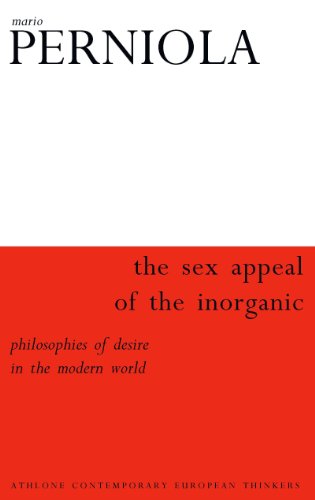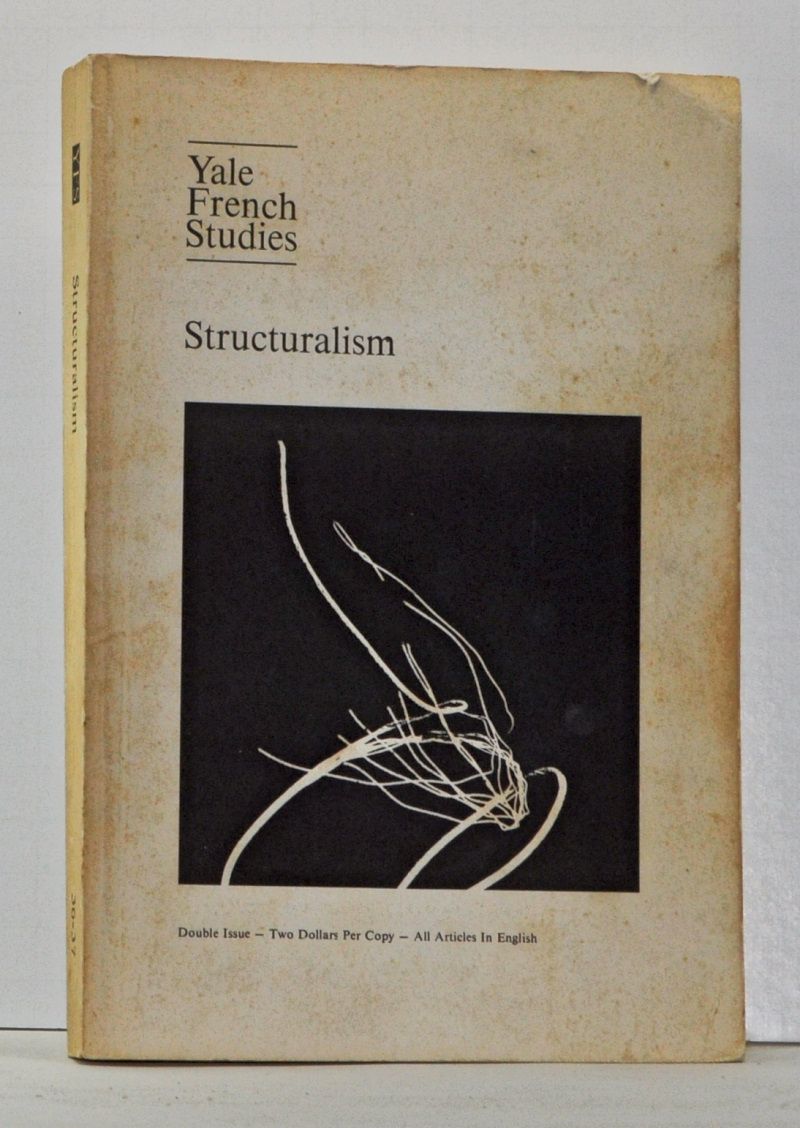Mario Perniola: The Sex Appeal of the Inorganic: Philosophies of Desire in the Modern World (2000/2004)
Filed under book | Tags: · cybersex, desire, philosophy, sex, sexuality, thing

“We live in a world where the one-time opposition between things and humans has been transformed, where the center of contemporary sensibility is the encounter between philosophy and sexuality, where sex extends well beyond both the act and the body. We live in a world where to be sexy is to ignore the distinctions between animate and inanimate objects of desire, where the aesthetics of sex are being revolutionized.
An organic sexuality, based on sex difference and driven by desire and pleasure, is being replaced by a neutral, inorganic and artificial sexuality, a sexuality always available but indifferent to beauty, age or form, a sexuality freed by thought from nature.
The Sex Appeal of the Inorganic takes the reader on a radical, new tour of Western philosophy-from Descartes, Kant and Hegel to Heidegger, Wittgenstein and Sartre-to reframe our understanding of personal experience and the aesthetic, to examine how, if we are to remember how to feel, we must become a thing who feels, we must think ourselves closer to the inorganic world and move further from our bodies.”
First published as Il sex appeal dell’inorganico, Einaudi, Torino, 2000.
Translated by Massimo Verdicchio
Publisher Continuum, London/New York, 2004
Athlone Contemporary European Thinkers series
ISBN 0826462448
vi+147 pages
Reviews: Stella Sandford (Radical Phil 2004), Farris Wahbeh (J Aesthetics & Art Criticism 2006), Patricia Marino (J Hist Sexuality 2010).
Interview with author (1996-97)
PDF (7 MB)
Comment (0)Yale French Studies 36/37: Structuralism (1966)
Filed under journal | Tags: · anthropology, language, linguistics, literary criticism, literary theory, philosophy, psychoanalysis, structuralism, unconscious

An early English-language collection of French structuralist writings.
Essays by André Martinet, Philip E. Lewis, Claude Lévi-Strauss, Harold W. Scheffer, Sheldon Nodelman, Jan Miel, Jacques Lacan, Geoffrey Hartman, Jacques Ehrmann, Michael Riffaterre, and Victoria L. Rippere. Bibliographies compiled by Elizabeth Barber, Allen R. Maxwell, Jacques Lacan, Anthony G. Wilden, and T. Todorov.
Edited by Jacques Ehrmann
Publisher Yale University Press, 1966
272 pages
PDF (17 MB)
Comment (1)Rhizomes, 30: Quantum Possibilities: The Work of Karen Barad (2016)
Filed under journal | Tags: · epistemology, feminism, knowledge production, materialism, ontology, philosophy, physics, quantum physics, queer, science
“In the past decade, Karen Barad’s oeuvre, especially the voluminous Meeting the Universe Halfway (2007), has attracted increasingly great attention in feminist philosophy, cultural studies and feminist science studies. Alongside scholars like Elizabeth Wilson and Vicki Kirby, she has spearheaded the recent feminist exploration of complex scientific issues, and presented new less categorical ways of thinking ontology and epistemology (or indeed onto-epistemology as she refers to it) as a result. Many of the terms introduced and developed by Barad, such as ‘intra-action’, ‘diffraction’ and ‘agential realism’ have shifted the standard metrics of knowledge production and her theories have inspired animated discussion in emerging critical strands as varied as the new materialism in feminism, object oriented ontology, post- and transhumanism, speculative realism, environmental and digital humanities, among others. In a critical climate that is becoming increasingly ‘Baradian’, this special issue on the ‘Quantum Possibilities’ of Barad’s work does not merely aim to reflect the engagements currently being made within these fields, but extends Barad’s ethos of continually rethinking our critical concepts and methodologies ‘without taking these distinctions to be foundational or holding them in place’. Creating ‘diffractive’, or new ‘quantum level’ means of reflecting on, and engaging with Barad’s work, the essays collected here stake out a new set of directions for their wide array of disciplinary identities.”
With essays by Joseph Rouse, Evelien Geerts and Iris van der Tuin, Rebekah Sheldon, Kathrin Thiele, Hanna Meißner, Andie Elizabeth Shabbar, Ulf Mellström, Martin Savransky, Dorothea Olkowski, Graham Harman, Levi R. Bryant, Rick Dolphijn, Katie King, Ino Mamic, and Myra J. Hird.
Edited by Karin Sellberg & Peta Hinton
Published 12 July 2016
Open access
ISSN 1555-9998

